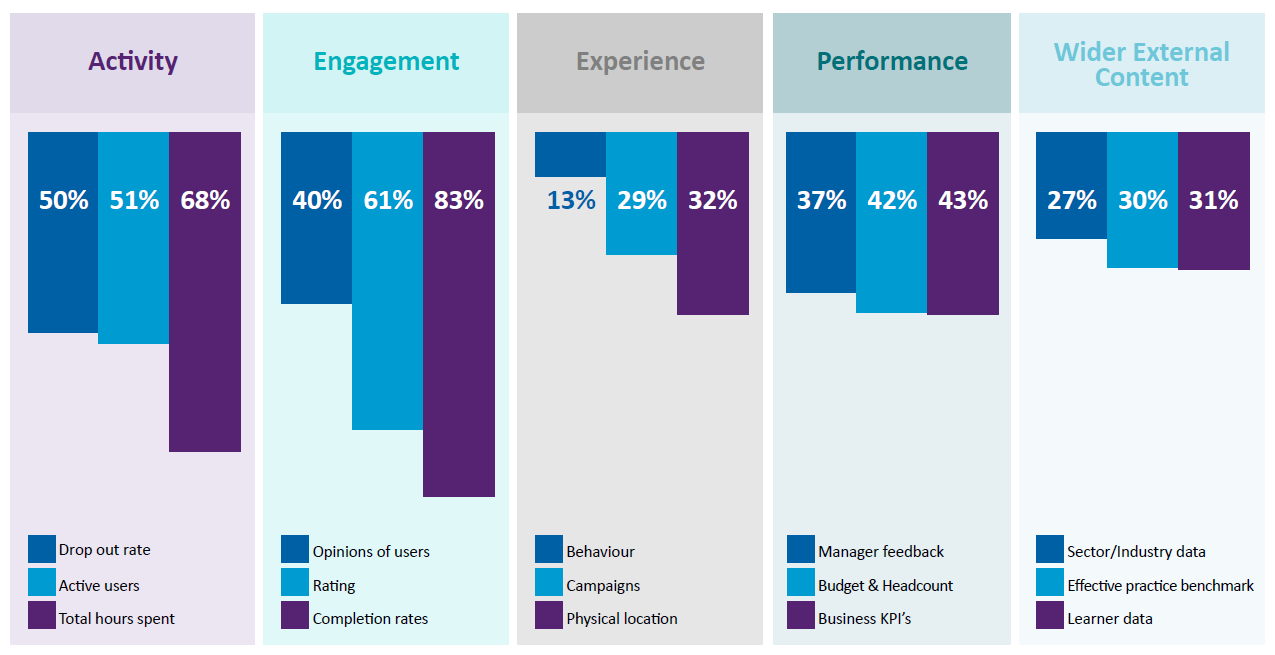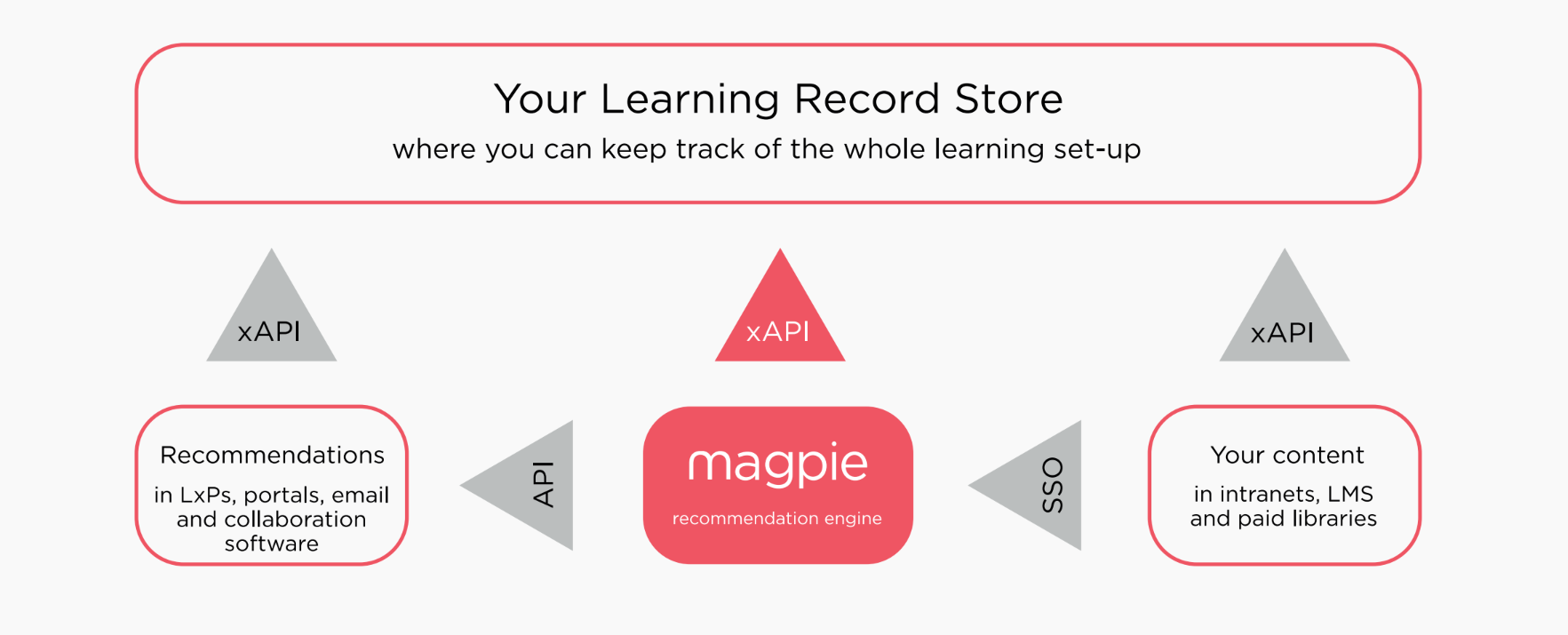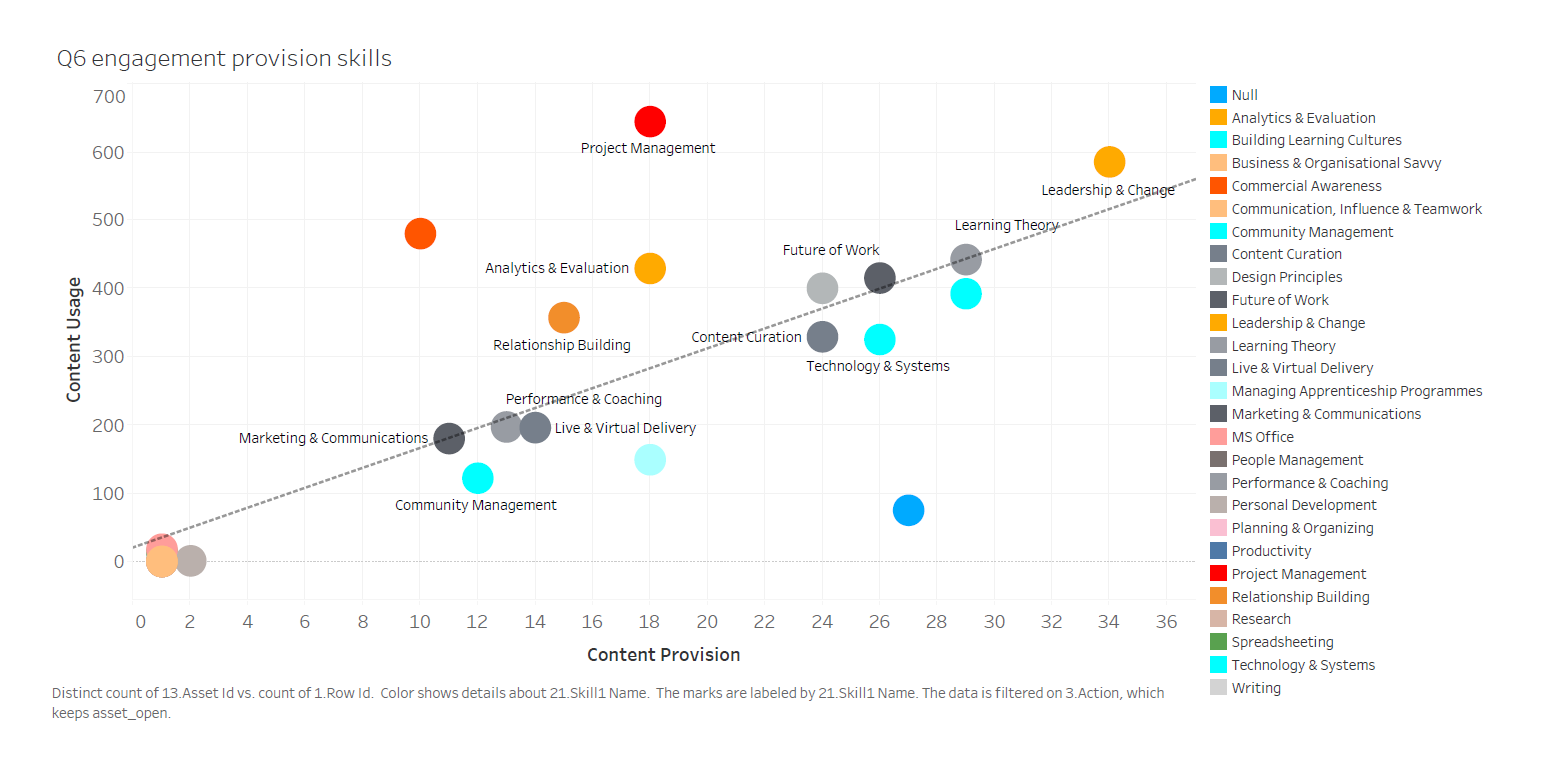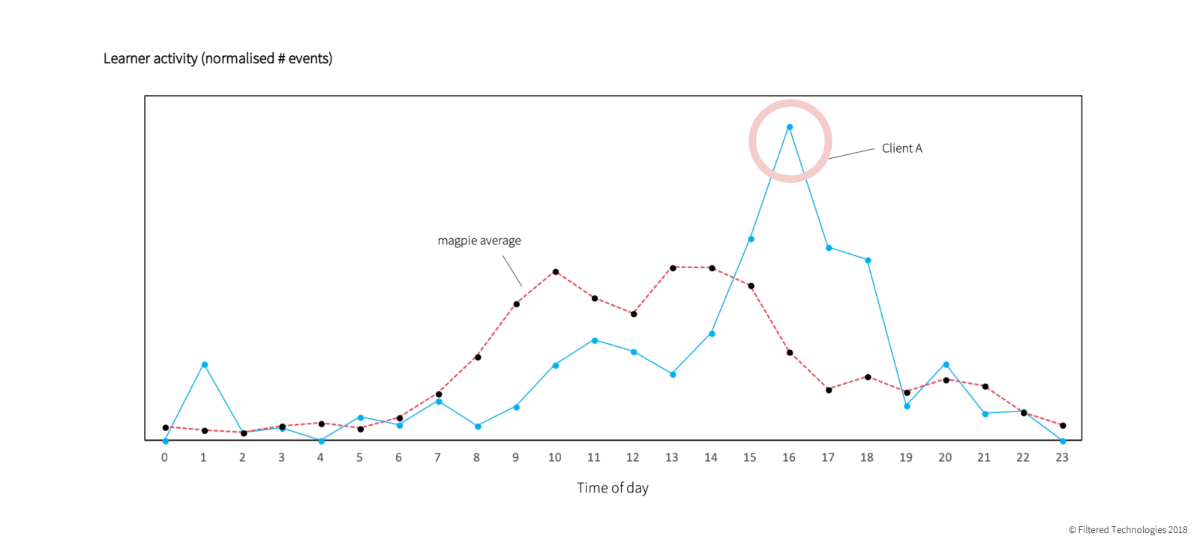It’s been a busy month for us here at Filtered. We hosted a successful data-driven learning strategy workshop for senior L&D figures, Taking Flight, with speaking Heads of Learning from P&G and Reach plc. We got the chance to catch up with many of you at Learning Technologies Summer Forum and gave a packed seminar on data-driven learning. And last but not least, we completed our Series A venture capital investment predicated on the strength of our intelligent learning recommendations and how they can inform a data-driven learning strategy.
Notice a running theme here? More than ever, data is the fuel that drives organisations forward (data is the new oil, after all). And failing to harness it astutely in learning strategies causes learning departments to fall behind the wider business - and the business to fall behind its competitors.
Ability to use data effectively really is the key current differentiator. And yet, according to research we ran with Towards Maturity, the majority of L&D departments say they ‘cannot use data effectively due to L&D lacking in-house data skills’.

L&D talk a lot about addressing skills gaps. Well, here’s one of our own. How can we upskill our learning departments to take advantage of the wealth of opportunities data can provide? This 10 point plan is a start.
- Reimagine data collection
- Ask the right questions
- Improve your own data skills
- Use the right tech
- Make intelligent learning recommendations
- Make smart internal recommendations
- Learn from other industries
- Use wider benchmarks
- Make the case
- Take a user-centric data approach
1) Reimagine data collection
This may be stating the obvious, but if you don’t have the data in the first place, there’s not much you can do with it. Things have come a long way since the days of the LMS being revered as a font of data knowledge. Now it’s little more than a glorified certificate holder, with about as much data potential as a primary school science experiment.
You know you need data. But what type? We can find out from, well, data.

From our Towards Maturity report - download the full version here.
As you can see from this chart, there is plenty of scope for L&D to improve the data it collects. The only things being tracked by the majority of departments are perfunctory metrics like time spent, completion rates and ratings. These are easy and still worthwhile collecting, but fail to provide any true insight into your audience.
We need to rethink measurement entirely. These basic models are outdated. Start thinking about your audience as customers and monitor metrics such as deeper behaviour and usage, user feedback and net promoter scores. Then compile them to paint an overall portrait that you can really interrogate.
2) Ask the right questions
It’s one thing to collect all this data. It’s another knowing how to prod and probe it to gain actionable insights. As part of deciding what exactly you need to collect, think about what questions you need the data to answer.
Perhaps the easiest way to do that is to think of the questions that you’ll have to answer yourself. What will your stakeholders want to know when the project gets running? That often means focusing more on business performance KPIs, or at least business challenges.
Is our learning provision helping to fill skills gaps in the organisation, for example? Is there a demonstrable impact on specific business issues or problems? Are we spending less on the learning than the problem is costing us? Because that’s how we can truly prove ROI and value to the wider business.
3) Improve your own data skills
It’s not easy to answer all of these questions. Especially if you’re relatively new to the world of data (as the above stats suggest much of L&D and HR are).
And there’s no need to feel guilty. Data is complicated. That’s why some of the fastest-growing job markets are in data science and machine learning. Demand is outstripping supply, and investing in your own data skills and those of your team is bound to pay off in the long run.
There’s no way you can fix learner skills gaps with a data-driven learning strategy if you’ve got data skills gaps in your own team. Sometimes L&D need to step up and learn and develop themselves. Sign up for a data science course, or try out some of the data science recommendations in magpie for L&D.
And it’s not always possible to get the skills you want in-house. Sometimes it’s much more efficient to bring in data science experts, whether external or through hiring. Yet despite 72% of learning departments not performing detailed analysis, only 10% work with data specialists. We couldn’t provide the service we do for clients without our data science team.
4) Use the right tech
So now you've assembled your data avengers, you’ve stocked up your data science skills and your team is raring to go. That’s when you need to provide them with the tools they require to get the job done. You need a learning data stack.
Most cutting edge learning tech (such as LXPs) these days has data-collecting capabilities through xAPI (think of it as a language that allows the systems to talk to and share data with each other). With the correct setup, you can track relevant learning data through every stage of the learning journey.
The following is an example of how our own tech, the smart LXP, sits in a data stack, to illustrate what that kind of system might look like:

However, these days even the Learning Record Store is not 100% required, as magpie has its own self-contained data analytics capabilities that draw from its algorithmic skills signatures and the machine learning that goes on behind the scenes.
Only 1 in 10 organisations are using that kind of machine learning, which is surprising given that the power of data is only truly unlocked when you combine it with that of AI. That’s when the real exciting forecasting and recommendations can happen.
5) Make intelligent learning recommendations
Use all of this data to provide personalisation for your learners. This is perhaps the most important on-the-ground, immediate way you can use data to supercharge your learning. Your people are already used to sophisticated data-driven personalisation in their consumer lives from Spotify, Netflix et al. With the right tech you can bring that experience to their working lives.
Using the advanced data you’ve collected about your target audience and their behaviour, you can make clever predictions about what they need to learn next. If a user is highly engaged with a certain profile of learning assets, provide them with more that fit that profile.
This sounds obvious, but it takes a lot of nimble data juggling to get learning recommendations better than the endless toilet seat loop. Thankfully you’ve now got those data scientists and that clever tech to help you.
6) Make smart internal recommendations
As these kinds of data interactions start to provide mini-Eureka moments across the organisation, you need to seize them and mould them into a coherent whole. That’s when you can truly start to harness a data-driven learning strategy.
The power of this is inherent in its scalability. By triggering these data-informed moments on the near-instant timescale facilitated by AI, you begin to improve your offering for every individual learner almost immediately.
And over time, the data gives you a valuable profile not just of your users, but of your whole organisation. The value then needs to be extracted from that data by analysis that provides actionable insights for the business.
What do I mean by that? Things like knowing when is the best time to send engagement emails or automatically running re-engagement campaigns. Or on a deeper level, you can work out things like where the skills gaps are in your content provision.
Here’s an example taken from a demo magpie instance. Based on skills signatures, you can very quickly see which skills are in high demand but under-supplied (Project Management as a key pressing one):

These kinds of actionable insights allow you to make learning strategy decisions as informed by the data, not just a hunch or based on qualitative feedback. They also provide value to the wider business, showing it what skills are important to its workforce and how learning is helping provide them. And they improve ROI, pointing the way to investment in content that’s actually used, doesn't just languish in some distant corner of a faraway LMS.
Set a few of them up in a dashboard that your stakeholders can access, provide regular reports and watch your L&D team become data champions.
7) Learn from other industries
Many industries are slightly further along their data journey than L&D. In digital marketing (a subject close to my heart), for example, the use of data to improve user experience and prove ROI is assumed. There’s plenty we can bring into L&D from marketing.
One of the most common complaints across the industry is “I’ve got all this content and no one’s using it.” The solution is simply intelligent learning recommendations and better marketing. Reach learners in the channels they frequent with content that’s personalised to them.
Just making learners more aware of their options through internal comms is also important, as is the way we position our learning solutions in messaging to them. Think about your people as internal customers. What’s the value proposition to them? How are they receiving it? What problems can we solve for them? The answer lies in the data.
That doesn’t necessarily mean big, bold, loud new initiatives. Remember, learners are already overloaded. In marketing, we try to meet the customer where they are. That’s exactly what L&D need to do by better understanding learners’ points of view and behaviours. Data is perfect for that.
I’ve used marketing as an example here, but there are insights to be gained from almost every industry.
8) Use wider benchmarks
In a similar vein, we also need to be better at benchmarking our data usage against industry best practices to know how it stacks up. That can give a sense of the quick wins we can make to bring us up to speed, or stay ahead. Industry benchmarks like the aforementioned Towards Maturity report can be helpful, but also make sure to compare to wider data trends (Mary Meeker is the tech world’s equivalent to a data oracle).
That doesn’t, however, mean blindly copying everything everyone else is doing. Every business is different, and sometimes knowing your idiosyncrasies – and adapting to them – is a far more effective approach than just adopting what works for others.
In magpie’s reporting, for example, we often display clients’ data alongside an average of all our data as a method to easily highlight actionable insights for targeted learning interventions.

9) Make the case
You might believe in your data-driven learning strategy. Your upskilled team also might. Your data scientists definitely will. But if you haven’t got buy-in from above, it could all come to naught. Ideally try and get the backing of a C-level sponsor or group of senior champions to scope your initial data transformation project.
Given the potential for the project to sow wider benefits for the organisation, that shouldn’t be too hard to do. There are so many things that data can help improve, you just need to articulate them. Some of the things I’ve mentioned above – skills gaps (reduced hiring spend); content provision (spend more on what users want and need and less on what they don’t); improved employee engagement (better performance and retention) – the list goes on.
10) Take a user-centric data approach
Finally, and this is more of a guiding principle than an action point, make your data transformation all about your users. They’re your most important asset, after all. Focus on creating a great user experience to generate increased engagement, increased data and form a virtuous cycle.
In the age of GDPR, everybody is aware of their data rights, and the privacy concerns surrounding them. Allow users to access their data, and the insights they generate. And look after it well. Data is the new oil, so don’t let it spill.
Follow good data practice and only collect what you need, preferably anonymously. In fact, it’s a good idea to draw up a set of data principles both as a guiding light for your team and in the spirit of openness to assure users their data is safe (also in the spirit of openness – click the link above to check ours).
Follow these 10 principles and you’ll be able to harness a data-driven learning strategy in your organisation. The benefits speak for themselves, not just for your L&D department but across business as a whole. And what’s best? You’ll have the data to prove it.

